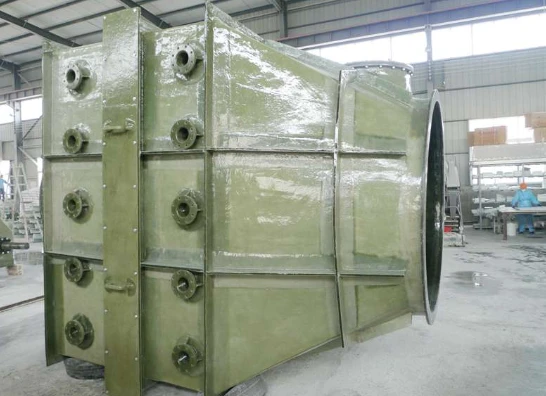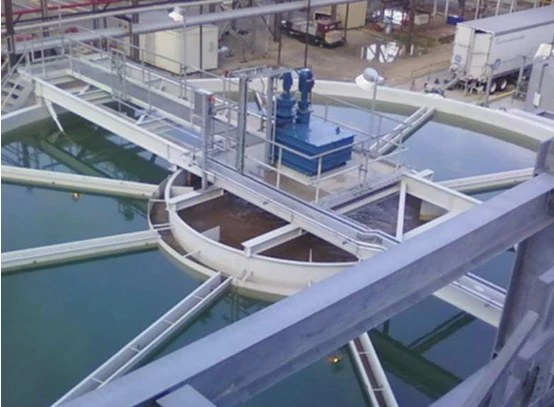
-
 Afrikaans
Afrikaans -
 Albanian
Albanian -
 Amharic
Amharic -
 Arabic
Arabic -
 Armenian
Armenian -
 Azerbaijani
Azerbaijani -
 Basque
Basque -
 Belarusian
Belarusian -
 Bengali
Bengali -
 Bosnian
Bosnian -
 Bulgarian
Bulgarian -
 Catalan
Catalan -
 Cebuano
Cebuano -
 China
China -
 China (Taiwan)
China (Taiwan) -
 Corsican
Corsican -
 Croatian
Croatian -
 Czech
Czech -
 Danish
Danish -
 Dutch
Dutch -
 English
English -
 Esperanto
Esperanto -
 Estonian
Estonian -
 Finnish
Finnish -
 French
French -
 Frisian
Frisian -
 Galician
Galician -
 Georgian
Georgian -
 German
German -
 Greek
Greek -
 Gujarati
Gujarati -
 Haitian Creole
Haitian Creole -
 hausa
hausa -
 hawaiian
hawaiian -
 Hebrew
Hebrew -
 Hindi
Hindi -
 Miao
Miao -
 Hungarian
Hungarian -
 Icelandic
Icelandic -
 igbo
igbo -
 Indonesian
Indonesian -
 irish
irish -
 Italian
Italian -
 Japanese
Japanese -
 Javanese
Javanese -
 Kannada
Kannada -
 kazakh
kazakh -
 Khmer
Khmer -
 Rwandese
Rwandese -
 Korean
Korean -
 Kurdish
Kurdish -
 Kyrgyz
Kyrgyz -
 Lao
Lao -
 Latin
Latin -
 Latvian
Latvian -
 Lithuanian
Lithuanian -
 Luxembourgish
Luxembourgish -
 Macedonian
Macedonian -
 Malgashi
Malgashi -
 Malay
Malay -
 Malayalam
Malayalam -
 Maltese
Maltese -
 Maori
Maori -
 Marathi
Marathi -
 Mongolian
Mongolian -
 Myanmar
Myanmar -
 Nepali
Nepali -
 Norwegian
Norwegian -
 Norwegian
Norwegian -
 Occitan
Occitan -
 Pashto
Pashto -
 Persian
Persian -
 Polish
Polish -
 Portuguese
Portuguese -
 Punjabi
Punjabi -
 Romanian
Romanian -
 Russian
Russian -
 Samoan
Samoan -
 Scottish Gaelic
Scottish Gaelic -
 Serbian
Serbian -
 Sesotho
Sesotho -
 Shona
Shona -
 Sindhi
Sindhi -
 Sinhala
Sinhala -
 Slovak
Slovak -
 Slovenian
Slovenian -
 Somali
Somali -
 Spanish
Spanish -
 Sundanese
Sundanese -
 Swahili
Swahili -
 Swedish
Swedish -
 Tagalog
Tagalog -
 Tajik
Tajik -
 Tamil
Tamil -
 Tatar
Tatar -
 Telugu
Telugu -
 Thai
Thai -
 Turkish
Turkish -
 Turkmen
Turkmen -
 Ukrainian
Ukrainian -
 Urdu
Urdu -
 Uighur
Uighur -
 Uzbek
Uzbek -
 Vietnamese
Vietnamese -
 Welsh
Welsh -
 Bantu
Bantu -
 Yiddish
Yiddish -
 Yoruba
Yoruba -
 Zulu
Zulu
Drill Rod Connections Basics, Tapered Design & Applications Explained
- Drill Rod Connections: Understanding the Basics and Its Critical Role
- Structural Composition: Core Components Explained
- Technical Advantages: Engineering Superiority Underground
- Performance Comparison: Leading Industrial Solutions
- Customization Framework: Precision Tailoring Options
- Operational Applications: Field Implementation Scenarios
- Tapered Drill String: A Closer Look at Design and Applications

(drill rod connections understanding the basics and its)
Drill Rod Connections: Understanding the Basics and Its Critical Role
Drill rod connections serve as the vital interlocking mechanisms between individual drill pipe sections, fundamentally influencing operational stability. These precision-engineered junctions transfer torque loads exceeding 20,000 Nm while withstanding axial forces reaching 500 tons in deep-bore applications. The physical interface where tensile stresses converge demands metallurgical excellence; material fractures at connection points account for 43% of premature drill string failures according to International Drilling Equipment Association reports.
Structural Composition: Core Components Explained
Modern connection systems comprise three critical elements: the threaded male pin (typically featuring trapezoidal or triangular profiles), corresponding female box receptacles, and precisely calibrated sealing surfaces. Thread taper angles range between 1°-3° to optimize load distribution, while thread roots incorporate stress-relieving radii of 0.1-0.3mm to prevent crack propagation. Sealing integrity relies on metal-to-metal contact surfaces achieving
Technical Advantages: Engineering Superiority Underground
Premium connections deliver 19% higher torsional strength compared to standard API specifications while reducing vibration harmonics by 62% through harmonic dampening thread forms. The most advanced systems implement dual-seal technology combining primary metal seals with secondary elastomer backups, achieving pressure containment up to 15,000 psi in HPHT environments. Such engineering directly contributes to extending operational lifespan from industry-average 8,000 drilling meters to over 25,000 meters before thread refurbishment.
Performance Comparison: Leading Industrial Solutions
| Manufacturer | Yield Strength (MPa) | Torque Capacity (Nm) | Service Life (meters) | Pressure Rating (psi) | Failure Rate (%) |
|---|---|---|---|---|---|
| Sandvik TDX | 1350 | 31,800 | 28,500 | 12,500 | 0.7 |
| Boart Longyear MF | 1200 | 27,200 | 22,300 | 10,500 | 1.2 |
| Atlas Copco RD | 1280 | 29,700 | 25,100 | 11,800 | 0.9 |
| API Standard | 930 | 19,500 | 8,400 | 7,200 | 3.8 |
Independent verification data from 2023 Global Drilling Benchmarks Report confirms premium connections reduce non-productive time by 38% on average. This performance disparity is attributed to proprietary heat treatment protocols achieving uniform 43-45 HRC hardness across threaded regions.
Customization Framework: Precision Tailoring Options
Connection customization addresses specific lithological challenges through dimensional optimization: borehole diameters below 200mm may require modified thread leads of 8-12mm rather than standard 16mm to preserve wall integrity. Abrasive granite formations dictate tungsten-carbide hardfacing applications on load-bearing flanks, increasing wear resistance by 14X. Offshore applications frequently integrate cathodic protection grooves to mitigate galvanic corrosion, extending service intervals to 18 months in saline environments.
Operational Applications: Field Implementation Scenarios
Canadian diamond drilling operations using double-shouldered connections in Québec’s Labrador Trough recorded reduced rod handling time by 27% during their 2022 exploration campaign. Similarly, Chilean copper miners eliminated catastrophic failures entirely at Chuquicamata after switching to tapered connections with asymmetric threads, despite encountering quartzite layers with UCS ratings exceeding 320 MPa. Field data confirms optimized connections decrease deviation rates by 5.3° per 100m depth in directional drilling applications.
Tapered Drill String: A Closer Look at Design and Applications
Tapered configurations systematically transition between rod diameters through graduated connections – typically progressing from HQ (96mm) to NQ (75.7mm) to BQ (60.3mm) during deep coring operations. This engineered approach achieves optimum load distribution along varying strata. Mining applications utilizing tapered designs report 19% higher core recovery rates at depths beyond 1,500m compared to uniform diameter strings. The technology’s superior torque transmission capabilities become particularly critical when drilling through seismically active zones where standard connections exhibit 31% higher stress-failure incidence.

(drill rod connections understanding the basics and its)
FAQS on drill rod connections understanding the basics and its
Q: What are the primary functions of drill rod connections?
A: Drill rod connections securely join rod segments to transmit torque, axial force, and drilling fluids. They ensure structural integrity while withstanding tension, compression, and vibration. Reliable connections prevent thread failure or separation during operation.
Q: How do tapered drill string designs enhance drilling efficiency?
A: Tapered drill strings optimize weight distribution by combining thicker/heavier rods at the top with thinner/lighter rods deeper down. This configuration reduces friction, improves penetration rates, and minimizes buckling risks. The design also allows better adaptability to challenging geological formations.
Q: Which industries most commonly utilize tapered drill strings?
A: Tapered drill strings are essential in mineral exploration, geothermal drilling, and deep foundation construction. They excel in deep-hole applications like blast hole drilling and water well installations. Their flexibility also benefits directional drilling operations in oil and gas sectors.
Q: What thread types dominate modern drill rod connections?
A: Common thread types include API-registered round threads (NC, HWT), trapezoidal threads, and proprietary double-start threads. Selection depends on required torque capacity, fatigue resistance, and sealing needs. Thread geometry critically affects connection strength and fatigue life.
Q: Why is proper maintenance crucial for drill rod connections?
A: Regular cleaning prevents abrasive particle damage and thread galling. Timely inspection identifies wear, cracks, or deformation before failures occur. Correct lubrication reduces friction and corrosion, extending connection lifespan and preventing costly downtime.
Latest news
-
FRP Fans Durable, Corrosion-Resistant & Energy-EfficientNewsJun.08,2025
-
Drill Rod Connections Basics, Tapered Design & Applications ExplainedNewsJun.08,2025
-
GRP Dual Lamination Products Durable & Corrosion-Resistant SolutionsNewsJun.08,2025
-
GRP Clarifiers Corrosion-Resistant & Low-Maintenance SystemsNewsJun.07,2025
-
FRP Duct Corrosion-Resistant & Durable Industrial SolutionsNewsJun.07,2025
-
High-Efficiency PDC Anchor Bits Fast High-Performance DrillingNewsJun.07,2025









